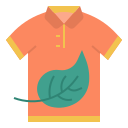Eco-Friendly Fabrics Revolutionizing Fashion
Eco-friendly fabrics are transforming the fashion landscape by introducing sustainable alternatives to traditional textiles. As environmental awareness rises, brands and consumers alike are seeking materials that reduce harm to our planet. The movement toward greener fabrics isn’t just about eco-conscious sourcing—it’s about reimagining clothing from fiber to finish. Innovations in fabric technology, mindful manufacturing, and circular design principles are revolutionizing style, making it possible to look good while doing good. This new era of fashion anchors itself in responsibility, promising a brighter, more sustainable future for all.
Organic Cotton's Environmental Role
Organic cotton stands apart from its conventional counterpart by being cultivated without synthetic pesticides or fertilizers. This not only benefits the health of farmers and local ecosystems but also ensures that the final fabric is gentle on sensitive skin. As demand for organic cotton rises, fashion brands are embracing certification systems that guarantee authenticity and transparency. Transitioning to organic cotton helps reduce water consumption drastically while supporting biodiverse agricultural practices—key steps toward a more responsible wardrobe. The fabric’s versatility ensures that it remains a favorite for everything from enduring basics to high-fashion statements.
Hemp’s Renaissance in Fashion
Hemp has returned to the spotlight thanks to its resilience and minimal need for inputs during cultivation. This ancient fiber grows rapidly, thriving even in poor soil while enriching it with nutrients, all without demanding excessive irrigation or chemical treatments. In the fashion world, hemp’s coarse beginnings are now refined with advanced technologies, resulting in fabrics that are soft, breathable, and durable. As more designers experiment with hemp blends and pure hemp textiles, the industry benefits from a strong, stylish fabric that leaves a fraction of traditional cotton’s ecological footprint.
Linen: Timeless and Eco-Conscious
Linen, derived from the flax plant, is another eco-friendly star in sustainable apparel. Requiring far less water to cultivate than cotton and thriving with minimal pesticides, linen provides a sturdy, elegant option for fashion-conscious consumers. Its breathable nature makes linen ideal for warm-weather attire, and it naturally softens with every wash while maintaining exceptional durability. As consumers seek timeless pieces, linen’s longevity stands out, offering both style and substance. The cultivation and processing practices for high-quality linen are continually becoming more efficient, securing its place in the future of sustainable textiles.
Innovative Plant-Based Alternatives
Bamboo Fabrics and Their Benefits
Bamboo emerges as a versatile and highly sustainable fabric source with rapid growth cycles and minimal need for pesticides. The resulting textile boasts hypoallergenic and moisture-wicking properties, making it comfortable and practical for everyday wear. While conventional methods of bamboo processing can be chemical-intensive, newer closed-loop techniques ensure that the environmental impact is significantly reduced. As bamboo fabrics become more sophisticated, they’re increasingly present in everything from basics to luxury collections, offering a compelling combination of ecological responsibility and performance.
Piñatex: Harnessing Pineapple Leaves
Piñatex represents a revolutionary approach to plant-based textiles by transforming discarded pineapple leaves into a leather-like fabric. This innovative material not only prevents agricultural waste but also provides farmers with additional income streams. Piñatex possesses a unique texture and durability, offering designers a creative, animal-free alternative to traditional leather. Its production process is low-impact compared to both animal and synthetic leathers, and ongoing research aims to refine its recyclability and performance. With sustainable accessories and footwear lines embracing Piñatex, the industry is witnessing a new era of inventive, eco-minded craftsmanship.
Mushroom Leather: The Rise of Mycelium
Mushroom-derived mycelium fabrics are pioneering a novel frontier in sustainable materials. Grown in controlled environments using agricultural byproducts, mycelium can be cultivated into sheets that mimic the strength and appearance of leather—without the associated cruelty or chemical processing. Mycelium-based leathers are not only light and flexible but also biodegradable, promising a truly circular approach to fashion. Designers are drawn to the unique textures and customization possibilities, marking mycelium as a breakthrough poised to transform vegan fashion and corporate sustainability initiatives alike.
Previous
Next
